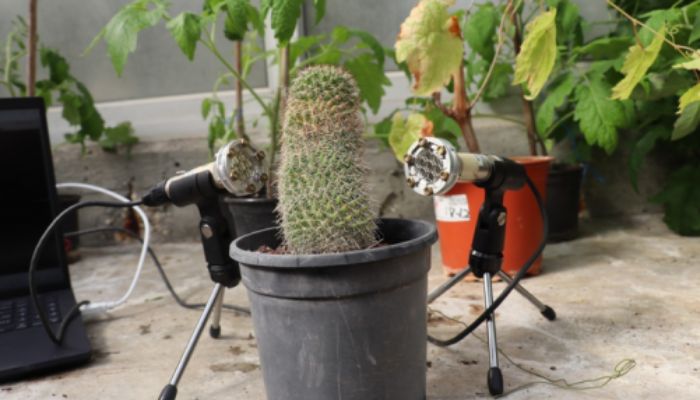Major breakthrough: When stressed, plants emit sounds humans can't hear
While inaudible to human ear, a variety of creatures — including bats, mice and insects — are likely able to detect sounds that plants generate
For the first time in the world, Tel Aviv University researchers recorded and analysed different noises made by plants.
The click-like noises, which sound like popcorn popping, are produced at a loudness comparable to human speech but at high frequencies that are above the human ear's range of hearing.
The investigators said that they discovered that when plants are stressed, they often generate sounds and that each form of stress and each variety of plant has a uniquely identifiable sound. While inaudible to the human ear, a variety of creatures, including bats, mice, and insects, are likely able to detect the sounds that plants generate.
Researchers from the Raymond and Beverly Sackler School of Mathematical Sciences, the Institute for Advanced Study, and the School of Plant Sciences and Food Security at the Wise Faculty of Life Sciences collaborated on the study under the direction of Prof. Lilach Hadany, Prof. Yossi Yovel, and research students Itzhak Khait and Ohad Lewin-Epstein. The prominent scientific journal Cell published the paper.
"From previous studies, we know that vibrometers attached to plants record vibrations. But do these vibrations also become airborne soundwaves — namely sounds that can be recorded from a distance? Our study addressed this question, which researchers have been debating for many years," Prof Hadany said in a statement.
Plants were initially placed in an acoustic box in a silent, isolated basement with no background noise throughout the study's first phase. The greatest frequency a human adult can detect is roughly 16 kilohertz, so ultrasonic microphones were set up at a distance of about 10 cm from each plant to record sounds at frequencies ranging from 20 to 250 kilohertz. Tobacco and tomato plants were the principal subjects of the study, but wheat, corn, cactus, and henbit were also observed.
The plants underwent a variety of treatments before being placed in the acoustic box: some plants did not receive water for five days, some had their stems cut off, and some were left alone.
The scientists wanted to see if plants emit sounds and if the health of the plant had any impact on those sounds. Their recordings showed that the plants produced noises between 40 and 80 kilohertz. The average sound emission rate for stress-free plants was less than one sound per hour, whereas the rate for wounded and dehydrated stressed plants was dozens of sounds per hour.
"In this study, we resolved a very old scientific controversy: we proved that plants do emit sounds!" Prof Hadany exclaimed.
"Our findings suggest that the world around us is full of plant sounds, and that these sounds contain information – for example about water scarcity or injury."
-
Blood Moon: When and where to watch in 2026
-
Elon Musk’s Starlink rival Eutelsat partners with MaiaSpace for satellite launches
-
Blue Moon 2026: Everything you need to know
-
Scientists unravel mystery of James Webb’s ‘little red dots’ in deep space
-
ISS crew of four completes medical evacuation with safe splashdown off California
-
Annular solar eclipse 2026: Here's everything to know about the ‘ring of fire’
-
World’s first ice archive created to preserve fast-melting glaciers’ secrets
-
NASA, DOE to develop Nuclear Reactor on the Moon by 2030













